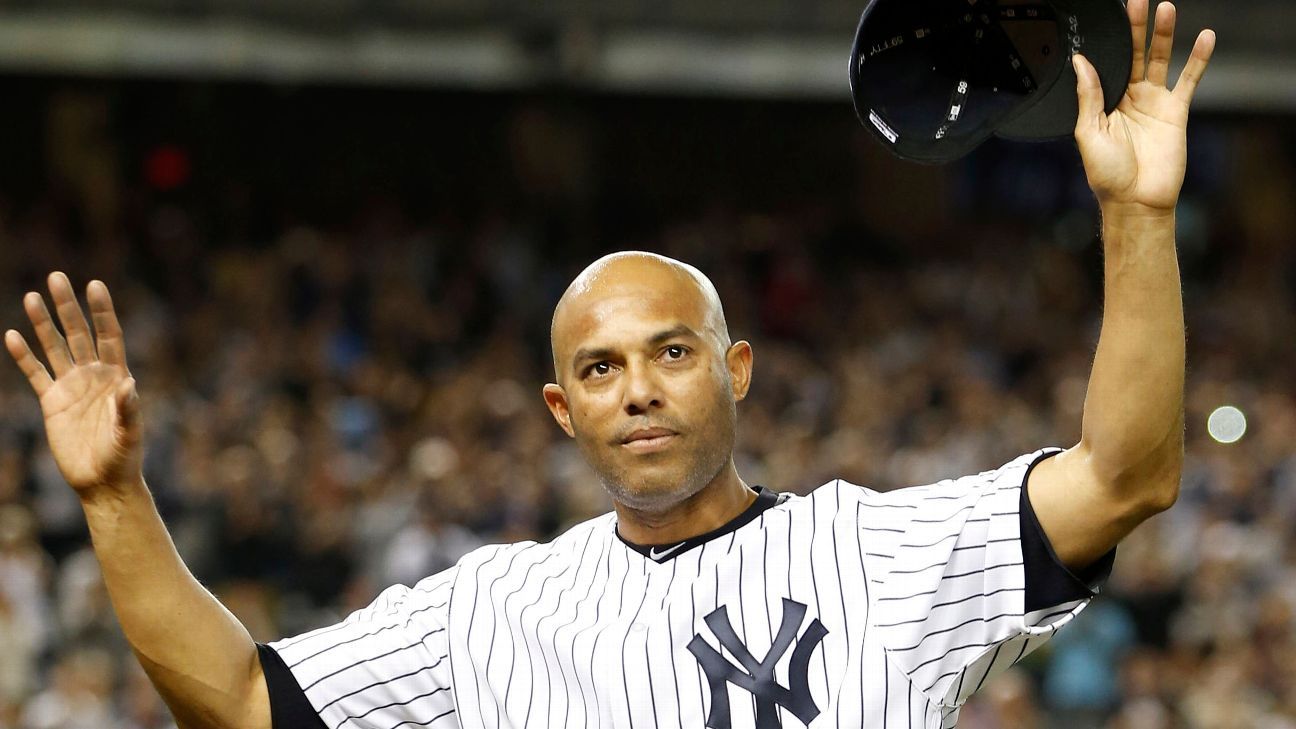With Mariano Rivera still tracking at 100 percent in the Baseball Hall of Fame balloting, it’s clear that the Cooperstown electorate has settled on a couple of things. One is obviously that Rivera belongs in the Hall of Fame. But the possible unanimity in his selection also tells us that the once-hot debate about whether relievers belong in the Hall of Fame at all is now settled. The dissenters have all but disappeared.
There is still at least one out there, Boston-area sportswriter Bill Ballou, who wrote about why he couldn’t bring himself to list Rivera on his ballot. As a result, rather than ruining Rivera’s chances of becoming the first unanimous selection, Ballou decided not to submit a ballot this year. Now, I don’t agree with Ballou, but he did have defensible reasons for his position: The save is a terrible statistic, and closers aren’t used frequently enough to fully test their mettle. He likened closers to place-kickers in the NFL, like 23-year-veteran Adam Vinatieri.
The save statistic is indeed terribly flawed, but it’s also unique in one respect. For years and years, its existence has had a profound impact on actual on-field strategy. Pitchers like Rivera weren’t used like traditional relief aces, who were likely to enter a tie game, or even down a run or two, to wriggle a club out of a jam. Those relievers threw more innings, too, while Rivera, Trevor Hoffman, Dennis Eckersley and so many others were reserved for rarefied usage patterns defined by the parameters of the save rule — a statistic cobbled together by the great Chicago sportswriter Jerome Holtzman. In his book “Smart Baseball,” my ESPN colleague Keith Law has a chapter on this titled “Holtzman’s Folly: How the Save Rule Has Ruined Baseball.”
The thing is, these days we have enough tools to work with that we can identify the best relief pitchers, of both the present and the past. Most of these measurements are much more telling than saves. By the way, I am intentionally trying to avoid the “closer” label here because these definitions are forever shifting. The National League reliever of the year last season was Milwaukee’s Josh Hader, who finished tied for 20th in the NL with 12 saves. I don’t recall there being any sort of uproar about this. Hader was very clearly the best reliever in the league and there was also little doubt that even though he didn’t close many games relative to other premier short relievers, he was providing massive value to the playoff-bound Brewers.
The most common metrics tossed around when it comes to Hall of Fame debates are WAR and JAWS, the latter the brainchild of Jay Jaffe, a writer for FanGraphs.com, an ESPN contributor and author of the excellent “The Cooperstown Casebook.” JAWS is built upon WAR methodology in an effort to balance career production with peak value.
With or without JAWS, one thing that everyone can agree on is that Rivera is the best closer of all time and most would argue that he’s the best reliever, period. So if you can construct an argument that he doesn’t belong in Cooperstown, you are constructing an argument that no pure reliever ought to be there. One thing you might point out is that Rivera’s 56.2 career WAR ranks 227th all time, right between Orel Hershiser and Robin Ventura. His JAWS score (42.5) is the best of the pure relievers. It ranks behind Eckersley, who accrued a good chunk of WAR as a starting pitcher. But among starting pitchers, Rivera’s JAWS score would be tied with David Wells for 124th in history.
Jaffe lists relievers separately, so you’re comparing them only to each other. That’s clearly the way to go, but it doesn’t address the larger question of if relievers should be in the Hall at all. The fact that the bottom-line value of Rivera — the consensus best at his position — is roughly comparable to very good, but definitely not great, starters is at the heart of the argument that relievers aren’t Hall-worthy in the first place. However, most analysts seem to have come around to where I’m at: For relievers, it’s not about the quantity of their innings, and it’s not really about saves, either, and it’s not about WAR. It’s about the impact they have on winning, and WAR captures only a sliver of the picture for that position.
